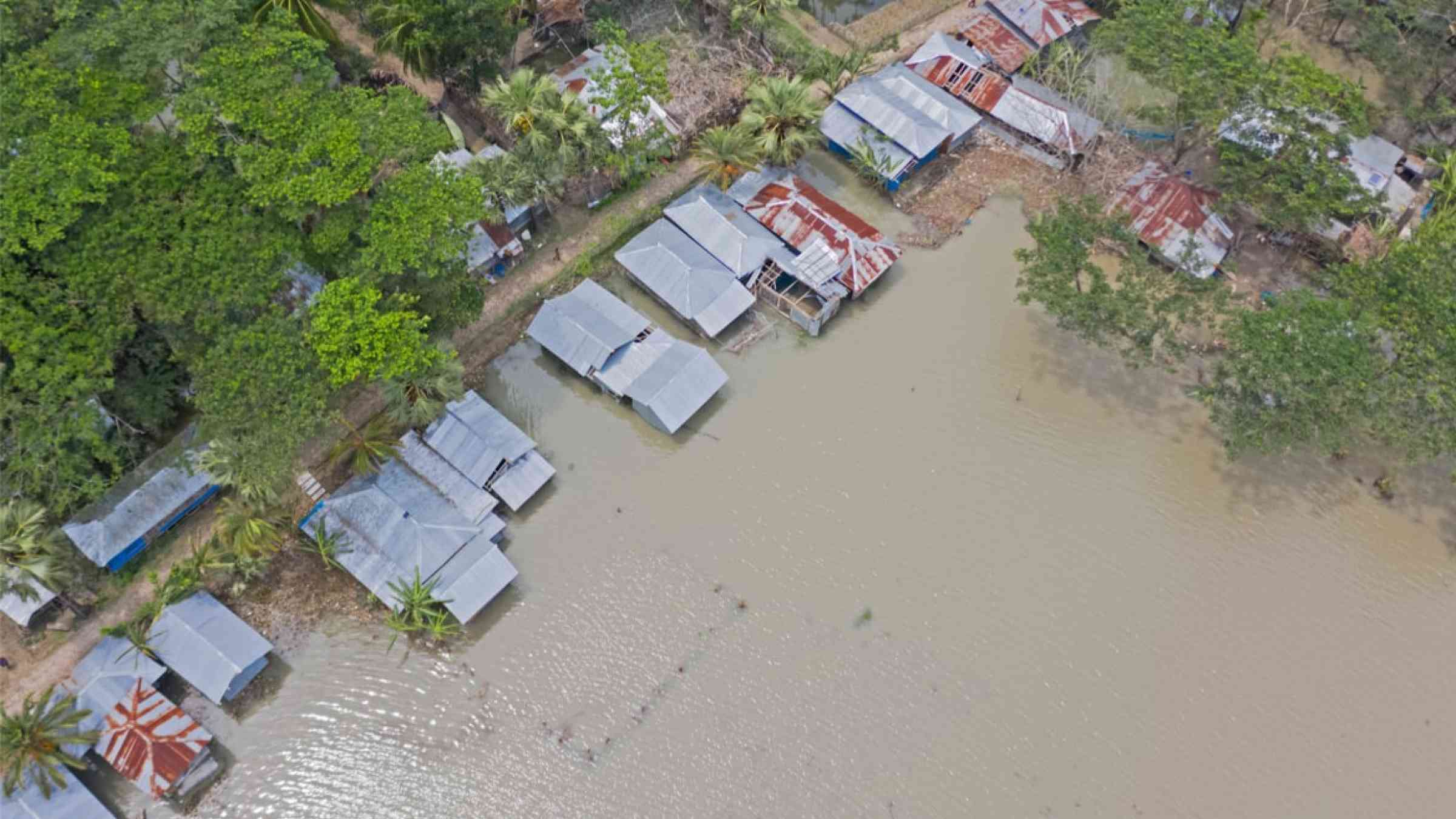Drone technology saves thousands from devastating cyclones

Worsening cyclones resulting from climate change threaten the lives of millions throughout Mozambique. Now, a team of experts developed a new drone technology that's proven to be successful in averting large-scale humanitarian crises.
Summer used to bring a lot of joy for many rural communities in Mozambique, but of late, the rainy seasons have become sources of anxiety and fear among many residents of the country.
Severe tropical cyclones and storms have pummeled some parts of Mozambique, killing thousands of people and destroying property worth millions of dollars in the past few years.
In 2019, for the first time in the history of the country, Mozambique was ravaged by two strong tropical cyclones, Idai and Kenneth, in the same season.
Biche Lino Subhana, a 35-year-old resident of a resettlement centre in Montepuez district of Mozambique’s Cabo Delgado province told FairPlanet that he witnessed and experienced first-hand the consequences of the devastating Cyclone Kenneth.
"I used to have a small store where I was selling food, rice and [cooking] oil. The cyclone and the water completely destroyed my store and damaged my house and my other property. Luckily, we did not get hurt,” Subhana said.
Subhana added that with time and thanks to food support provided by the World Food Programme (WFP) he was able to rebuild his store and house that were damaged.
"I was able to rebuild my house because I had food from WFP to rely on to feed my family. When the food aid stopped, I had my store again and could make a living again. Life was good," said Subhana, who is a father of two. "If it was not for WFP, I don’t know how I would be living now."
At the resettlement centre, people are receiving food aid and support to grow their own food and raise chickens.
"We are receiving trainings and support on how to prepare our crops for the rainy season. Now they are teaching us how to better do the seeding to take advantage of the current rainy season," Subhana said. "They also share with us information about the weather so we can prepare and protect ourselves."
Cutting edge technology
However, experts have come up with cutting edge technology to visualise humanitarian emergencies and save millions of people in Mozambique.
A team of experts from the World Food Programme, in collaboration with partners, has created a flood-hazard model in Mozambique that calculates where damage from water is set to occur.
The mapping of flood prone areas was conducted across the entire Buzi river basin, which covers nine districts in the Sofala and Manica provinces in Mozambique. According to WFP, the results of this exercise benefited more than 1.1 million people who live in the 342 villages located along the Buzi river basin.
Drones allow technicians more agility and enable them to achieve greater precision in the information generated. At the same time, WFP has also partnered with academia, the international search and rescue community and National Institute of Disaster Risk Management to conduct a study on the use of drones for search and rescue operations in the Boane district of Maputo Province.
Domingos Reane, a senior programme associate at WFP Mozambique told FairPlanet that unmanned aerial vehicles (UAV), also known as a drones, were part of new flood-hazard mapping technology.
"Drones are actually used for humanitarian assistance in disaster preparedness and response like for risk mapping at the community level, for modeling to foresee the flooded areas," Reane said. "Connected with AI [Artificial Intelligence], drone product can be used to access damaged infrastructure after a disaster strikes [...] it can be used for search and rescue of people during the disaster such as floods."
Reane said that at the community level in Mozambique there were Local Disaster Management Committees to coordinate disaster preparedness.
"When an alert is issued at the central level about the occurrence of a natural disaster, this alert is then run on the model to see the communities that could be affected," Reane said.
He added that an alert was issued at the provincial level and from the provincial level to the district and community levels through the Local Disaster Management Committees, which in turn instructs the population to leave the flood risk areas for safe zones.
"Normally the warnings have been within 72 hours."
Skills strengthening in SADC region
Patrick Mckay, an Unmanned Aircraft Systems (UAS) data operations manager at WFP, told FairPlanet that his organisation had gained invaluable skills and experience through the work with drones in Mozambique over the past few years.
"This has led to the establishment of the Unmanned Aircraft Systems (UAS) Competence Centre in Johannesburg [South Africa], launched in 2021," Mckay said. "Through this, WFP is continuing to enhance the use of UAS for humanitarian operations, with a focus on emergency preparedness and response to support not only WFP's operations but also to support the national governments and its partners."
Mckay added that the proposed actions to be implemented through the competence centre include capacity and skill strengthening for many countries in the SADC region, coupled with hardware and software to enable them to autonomously use these technologies for emergency preparedness and response activities.
"Plans are also in place to build capacity in the SADC [Southern African Development Community] secretariat," he said.
He stated that while WFP could certainly build highly effective skills in many of these countries, in the short term it won't be possible to raise all countries to the very high levels Mozambique had achieved.
"As such, a rapid response team based in Johannesburg will be assembled and equipped with leading edge tools and expertise, ready for deployment in future emergencies within the region," he said.
According to Mckay, these activities would be taking place over the next two years, with the first set coming up in the next few months in Tanzania and Namibia.